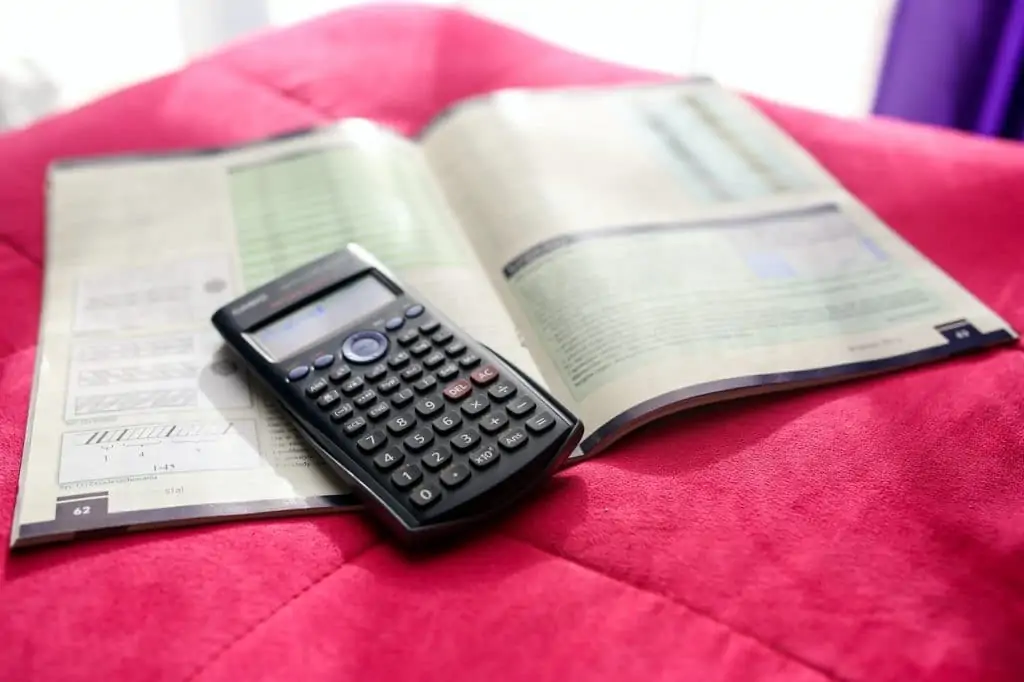Are you studying macroeconomics either in high school or college? If you are, then there are definitely a number of different formulas that you need to know. Each of these formulas will make it a whole lot easier for you to be prepared for that next class or your next test, no matter what you’re studying for.
If you’ve just gotten started with macroeconomics, you’re definitely going to want to focus on the high school equations section or the AP Macroeconomics formulas. If you’re getting into college versions of the subject, you’ll want to look closer at some of the more advanced areas and the higher level equations that are going to help you prepare. You’ll learn anything from how to calculate inflation rate using GDP to the CSPI formula and the nominal GDP formula.
Keep in mind that macroeconomics and microeconomics are related fields, but if you’re looking for microeconomics you’re going to want to check out our other article on those formulas. This article is going to look at methods used for understanding aspects of the whole economy, including long term economic growth and short term business cycles.
Looking for the best AP Macroeconomics review books? Check out our post on that here. Or if you’re taking Microeconomics, must know Micro formulas here.
If you still need an Economics textbook, we go over the best ones here.
General High School Macroeconomics
When it comes to the first year or semester of your macroeconomics journey, you’re likely not going to need a whole lot of advanced formulas to help you out. In high school macroeconomics, you’re going to get an introduction to the topic, and you’ll get a basic overview of the different economics formulas you’re going to need as you continue forward in the subject including the GDP deflator formula and the general GDP formula.
GDP = C+I+G+Xn
Where GDP = Gross Domestic Product
C = Spending by Consumers
I = Investment by Businesses
G = Government Spending
Xn = Net Exports
The expenditure approach to measuring GDP is based on the equation above, where gross domestic product (GDP) is equal to spending by consumers, investment by businesses, government spending, and net exports added together. This provides an overall understanding of the value of all economic activity within a country.
GDP=W+I+R+P
Where GDP = Gross Domestic Product
W = Labor
R = Rent
I = Interest
P = Remaining Profits
The income approach to measuring GDP states that the gross domestic product (GDP) is equal to labor (W), rent (R), interest (I) and remaining profits (P) added together. This provides an overall understanding of the amount of money that is coming into a given area.
(Quantity of Goods x Current Price) +All Others
When we calculate the nominal GDP, we are looking at the quantity of goods multiplied by the current price. This total is then added to the sum of all others. The outcome is the market value of goods and services that are produced within the economy but not adjusted for inflation.
GDP Deflator = [(Nominal GDP)/ (Real GDP)] x 100
The GDP deflator is the total of the nominal GDP divided by the real GDP with the whole total then being multiplied by 100. This gives you an idea of the price inflation that happens between the nominal and real GDP. These trends are generally similar to that of the CPI or consumer price index.
Real GDP = [(Nominal GDP)/ (GDP deflator)] x 100
If you’re looking to calculate the real GDP, it is the total of the nominal GDP divided by the GDP deflator with the entire total being multiplied by 100. This will give you the measure of the value of output from an economy after it has been adjusted for inflation or deflation.
Growth Rate = [(Current year GDP – Last year GDP)/ (last year’s GDP)] x 100
The GDP growth rate first takes the current year’s GDP minus the last year’s GDP. This is then divided by last year’s GDP. The entire total is then multiplied by 100 in order to determine the amount that the GDP has grown over the past year.
Inflation Rate = [(Current year CPI – Last year CPI)/ (last year’s CPI)] x 100
If you’re looking to find the inflation rate using the CPI or consumer price index you can do this with the current year’s CPI and the previous year’s CPI. You would take the current year’s CPI and subtract last year’s CPI and then divide everything by last year’s CPI. You would then multiply everything by 100.
Real Interest Rate = Nominal Interest Rate – Inflation Rate
The real interest rate is equal to the nominal interest rate minus the inflation rate. This will provide a real return on the investment or loan that is being calculated.
Unemployment Rate = Number of Unemployed/Number in the labor force x 100
In order to determine the unemployment rate, we must first divide the number of unemployed people by the number of people in the labor force. This number is then multiplied by 100 in order to get a total amount of people who are currently not working.
Money Multiplier = 1/RRR
The formula for the money multiplier is equal to the total money the bank has in deposits by the amount that it is required to hold in reserve. The money multiplier is then the amount of money that a bank will earn with a single dollar in reserve.
MV=PY
Where M = Money Supply
V = Velocity of Circulation
P = Average Price Level
T = Volume of Transactions
In this equation, we take the money supply (M) multiplied by the velocity of circulation (V). This number should equal the average price level (P) multiplied by the volume of transactions (T). The quantity theory of money states that the change in money supply will affect the price level if we assume the velocity of money and also the level of output are fixed.
MPC+MPS=1
Where MPC = Marginal Propensity to Consume
MPS = Marginal Propensity to Save
Here you will take the marginal propensity to save (MPS) and add it to the marginal propensity to save (MPS) which should always equal 1 in a closed economy. This is because any increase in income is going to be either consumed or saved.
1/MPS
Where MPS = Marginal Propensity to Save
This is the spending multiplier, and it’s equal to 1 divided by the marginal propensity to save (MPS). With this equation, you’ll know how much income is actually being spent and how much is being saved.
Nx = Ex – Im
Where Nx = Net Exports
Ex = Total Exports
Im = Total Imports
In this equation, the net exports (Nx) of a country are found by taking the total number of exports (Ex) and subtracting the total number of imports (Im).
M[tax] = -MPC x (1/MPS) = (-MPC/MPS)
Where MPC = Marginal Propensity to Consume
MPS = Marginal Propensity to Save
In this equation, the marginal propensity to consume (MPC) as a negative is multiplied by 1 divided by the marginal propensity to save (MPS). This should be equal to the negative marginal propensity to consume (MPC) divided by the marginal propensity to save (MPS). The tax multiplier is about just how much total spending would happen if there were an initial change in taxation. This is always a negative number because when tax decreases, spending will increase.
Advanced Placement Macroeconomics
If you’re currently in an advanced placement course, you’re going to want to take a look at these formulas that are probably going to be introduced throughout the class. Each of these is going to take a slightly more advanced look at the topic and is going to set you up for some of the equations and topics that you’ll be looking at once you get into the college level courses.
S=I
Where S = Savings
I = Investments
In a closed economy, savings (S) will equal investments (I). This means that investment is the same as the amount of money that is being saved within an economy.
S=I+Nx
Where S = Savings
I = Investments
Nx = Net Exports
Contrary to the previous equation, in an open economy, savings is equal to investments (I) plus net exports (Nx). This means that the amount that is saved is equal to the total of all items/money invested and all that is exported.
CPI= (cost of market basket)/) Cost of market basket in base year) x 100
Where CPI = Consumer Price Index
In this equation, the consumer price index (CPI) is equal to the cost of the market basket in the present period divided by the cost of the market basket in the base year. This total is then multiplied by 100. The primary purpose of this equation is to find the measure of inflation.
MPC = (Dconsumer spending)/ (Ddisposable income)
Where MPC = Marginal Propensity to Consume
In this equation, you can find the marginal propensity to consume (MPC) by dividing the change in consumer spending by the change in disposable income. This reveals an average of how much an individual is likely to increase spending based on an increase of a dollar of disposable income.
C = A + MD
Where C = Consumer Spending
A = Autonomous Consumption
M = Marginal Propensity to Consume
D = Real Disposable Income
In this equation, the consumer spending (C) is equal to autonomous consumption (A) plus the marginal propensity to consume (M) multiplied by the real disposable income (D). It’s considered a fully stable function and expenditures are determined by national income.
Rate of growth x doubling time (in years) = 70
The rule of 70 states that there is a set number of years that it takes to double an investment or amount of money. It is based on the equation that the rate of growth, multiplied by the doubling time in years, will equal 70.
DI = Gross income – net taxes
Where DI = Disposable Income
In this equation, the disposable income (DI) is equal to the gross income (or the sum of all household income) minus the taxes that are paid on that income. This is the amount of money that an individual or household is able to spend.
%Dreal GPD = %D nominal GDP – %D price index
Where GDP = Gross Domestic Product
In order to determine the change in real GDP, we must look at the percent of change in the nominal GDP and subtract the percent of change in the price index. This will determine how much the gross domestic product has actually changed over a period of time.
PI = [(current year spending)/ (base year spending)] x 100
The price index (PI) is found by dividing the current years spending by the base year spending. This number is then multiplied by 100. The end result is a average of prices for a specific class of goods or services.
Real Income = Nominal income/(CPI/100)
Where CPI = Consumer Price Index
In order to determine real income, we must look at the nominal income divided by the price level. Price level is determined by the consumer price index (CPI) divided by 100. This is the actual value of the income.
MPC = DC / DDI
Where MPC = Marginal Propensity to Consume
C = Consumption
DI = Disposable Income
In this equation, the marginal propensity to consume (MPC) is equal to the change in consumption (C) divided by the change in disposable income (DI). This shows how much more an individual is likely to purchase as a result of a dollar increase of income.
MPS = DS/DDI
The marginal propensity to save (MPS) is equal to the change in savings (S) divided by the change in disposable income (DI). This shows how much more an individual is likely to save as a result of a dollar increase of income.
College Macroeconomics
Finally, the college section is going to look at the most advanced macroeconomics formulas that you’re going to want to know and the way that you can use them. We’ll break down what they’re actually for and how they function within the course to give you a better understanding of what you need to be studying in order to be prepared for anything that comes your way.
Spending Multiplier = DGDP/DSpending
Where GDP = Gross Domestic Product
The spending multiplier is found by taking the change in gross domestic product (GDP) divided by the change in spending. This shows how much GDP will increase or decrease based on government expenditures.
Tax Multiplier = DGDP/DTaxes
Where GDP = Gross Domestic Product
The tax multiplier is found by taking the change in gross domestic product (GDP) divided by the change in taxes. This shows how much GDP will increase or decrease as a result of increases or decreases in taxes levied by the government.
M1 = Cash + coins + checking deposits + traveler’s checks
Where M1 = Money Supply
In this equation, the money supply is found by adding together money that is considered ‘now’ money, or that which is immediately available. This means adding cash, coins, checking deposits, and traveler’s checks.
M2 = M1 + savings deposits + small time deposits + money market deposits + money market mutual funds
Where M2 = Near Money
In order to find M2, we add the M1 money (which includes ‘now money’) along with what is considered near money. These categories, including savings deposits, small time deposits, money market deposits, and money market mutual funds.
M3 = M2 + large time deposits
Where M3 = Near, Near Money
Finally, we have M3 money, which includes M2 money (‘near money’) and adds large time deposits. This category is considered ‘near, near money’ and is not as easily converted into currency.
PV = FV/(1+r)t
Where PV = Present Value of Money
FV = Future Value
R = Rate of Return
T = Number of periods
In this equation, to evaluate the present value of money (PV), we take the future value (FV) and divide it by the total of 1 plus the rate of return (r) raised to the number of periods (t). This produces the actual value of the money at the time in question, based on how it can be used.
When it comes to macroeconomics, there are a number of different formulas that you will need to know in order to pass your courses. These formulas include things like how to calculate national income, how to calculate net exports, and how to calculate real GDP with base year. Each of these should help you throughout your high school and college years in the field.
Need more help? Check out the best AP Macroeconomics review books here. Or if you’re taking Micro, our must know Microeconomics formulas post here.
If you’re looking for the best books on inflation, check out our article here.












